You must have heard about growing onions from scraps or in water, but have you tried growing this flavorful vegetable in containers? This creative and space-efficient method allows you to transform used plastic bottles into mini onion farms right at your doorstep.
Perfect for urban gardening or if you’re just tight on space, it promises the delight of cultivating fresh, homegrown onions without a sprawling garden. Plus, it’s an eco-friendly approach, giving those plastic bottles a second life.
Materials Needed
- Plastic bottles (preferably with a capacity of at least 2 liters). Ensure the bottles are clean and have lids to create a mini greenhouse effect.
- Quality potting mix
- Onion bulbs or sets
- A sharp knife or scissors
- A sunny spot to place your bottles
Process
Step 1: Preparing Bottles And Compost
Let’s get started by washing the plastic bottles thoroughly, removing labels and ensuring they’re completely dry. Using a sharp knife or scissors, cut the bottle in half, keeping the upper part as a funnel-like cover.
Now, for the compost – a crucial factor in your onion’s success. Mix potting mix with well-rotted compost or aged manure. This blend ensures a nutrient-rich environment for your onions to thrive. Fill each bottle with the compost mix, leaving some space at the top. Your mini onion containers are now prepped and ready for planting.
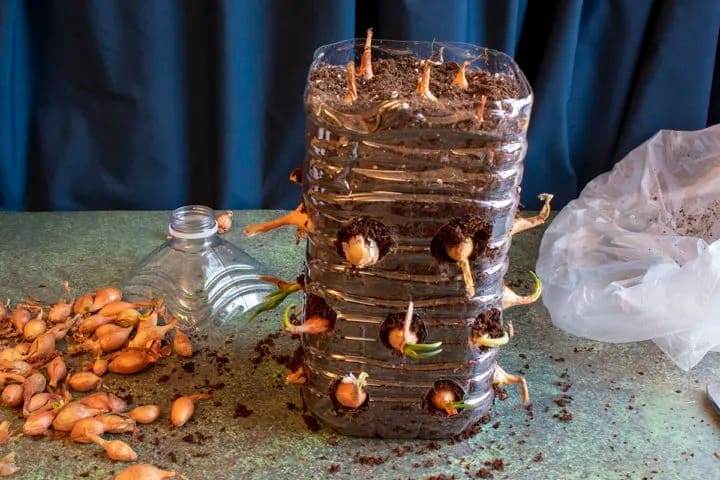
Step 2: Choose And Plant Onion Bulbs
When it comes to onions, choosing the right onion variety is key, so pick sets or bulbs suited for your climate. Planting onions in early spring or late fall, depending on your location, is ideal.
With your prepared bottles, make holes in the bottom for drainage. Place a layer of stones or broken pieces of another plastic bottle to further aid drainage. Now, plant your onion bulbs, pushing them gently into the compost mix, leaving the top exposed.
Space them adequately, considering the eventual size of the onions. Once planted, cover the bottles with funnel-like tops. This step creates a microclimate, promoting warmth and moisture retention – perfect for onion growth.
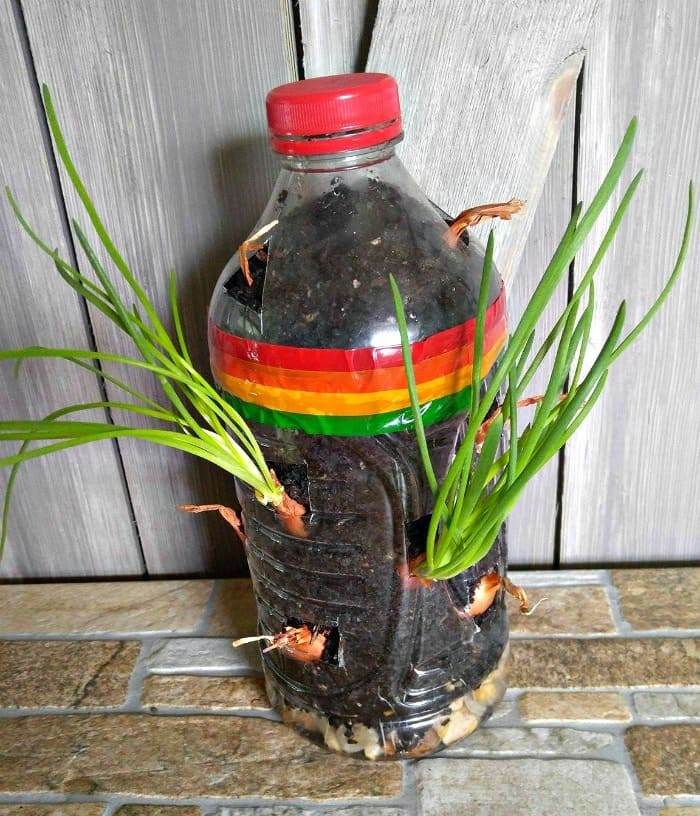
Step 3: Provide Onions With Enough Care
1. Light And Water
Onions, like any sun-loving plant, thrive in sunlight, so ensure your mini onion farm gets at least 6 hours of sunlight daily. Watering is crucial, but be mindful not to overwater, as onions dislike waterlogged soil. The plastic bottle design helps regulate moisture, but always check the soil’s moisture level before watering.
2. Fertilize
You can fertilize your onions once or twice a month, depending on the growth rate and the size of the bottle. Instead of traditional fertilizers, use kitchen waste like vegetable scraps, crushed eggshells, or diluted coffee grounds. This not only provides nutrients but also promotes sustainable gardening practices.
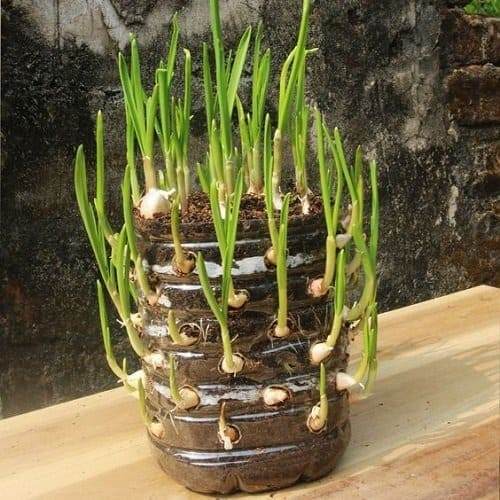
Step 4: Harvest And Storage
1. Harvest
As your onions grow and mature, it’s time to reap the rewards. Genenarally, it takes about 3-4 months for your onions to reach maturity. Onions are typically ready for harvest when the tops turn yellow and start to fall over. To maximize size, cease watering a couple of weeks before harvest.
Gently lift the onions from the compost, and if the weather is dry, allow them to cure outdoors for a few days. Once cured, remove excess soil, trim the roots, and homegrown, eco-friendly onions are ready for your kitchen.
2. Storage
There are many ways to keep your onions last longer and retain their robust flavor. For braiding, weave the stems of the onions together and hang them in a cool, dry, dark place. This allows air circulation and prevents rotting. Another method is to put the onions in mesh bags or tights and hang them in a cool, dry, dark place. This also allows air circulation and prevents rotting.
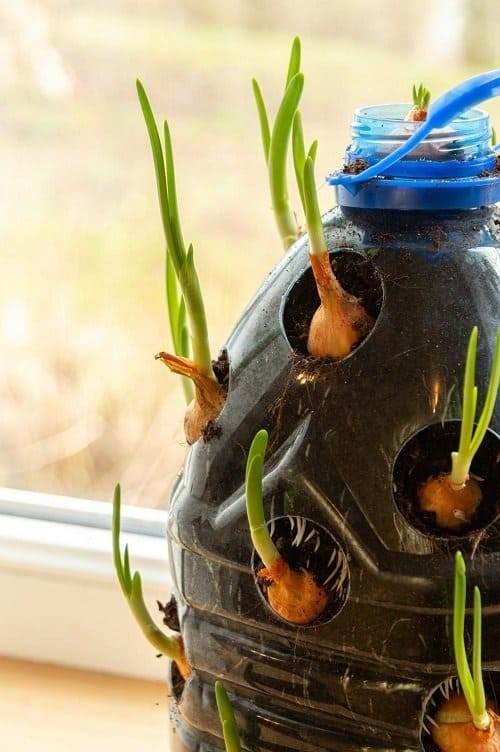
Keep In Mind
1. Adequate Drainage
Ensure that your plastic bottles have sufficient drainage holes at the bottom. Onions dislike waterlogged soil, and well-draining bottles prevent this issue.
2. Temperature Considerations
Onions thrive in cool weather. If you’re planting in warmer climates, consider providing some shade during the hottest parts of the day to prevent stress on the plants.
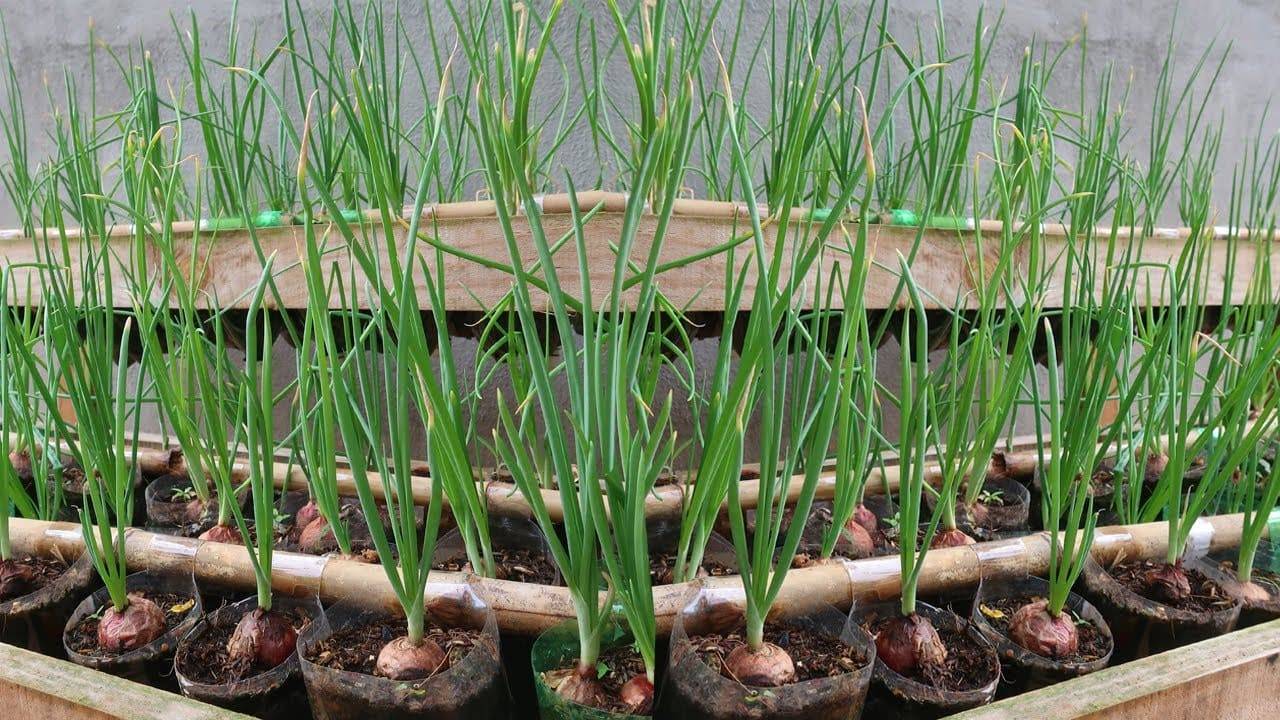
3. Avoid Overcrowding
If you’re growing multiple onions in one bottle, make sure they are spaced appropriately to avoid overcrowding. This promotes better air circulation and reduces the risk of diseases.
4. Adjustable Funnel Height
If possible, make the funnel-like cover of the plastic bottle adjustable. This way, you can raise it as the onions grow, providing them with more space and accommodating their upward growth.
Remember, gardening often involves a bit of experimentation. Observing your onions regularly and making adjustments based on their growth patterns and any challenges they face will contribute to a successful harvest. And if you’re interested in growing homegrown fresh vegetables, don’t forget to check out more articles.
